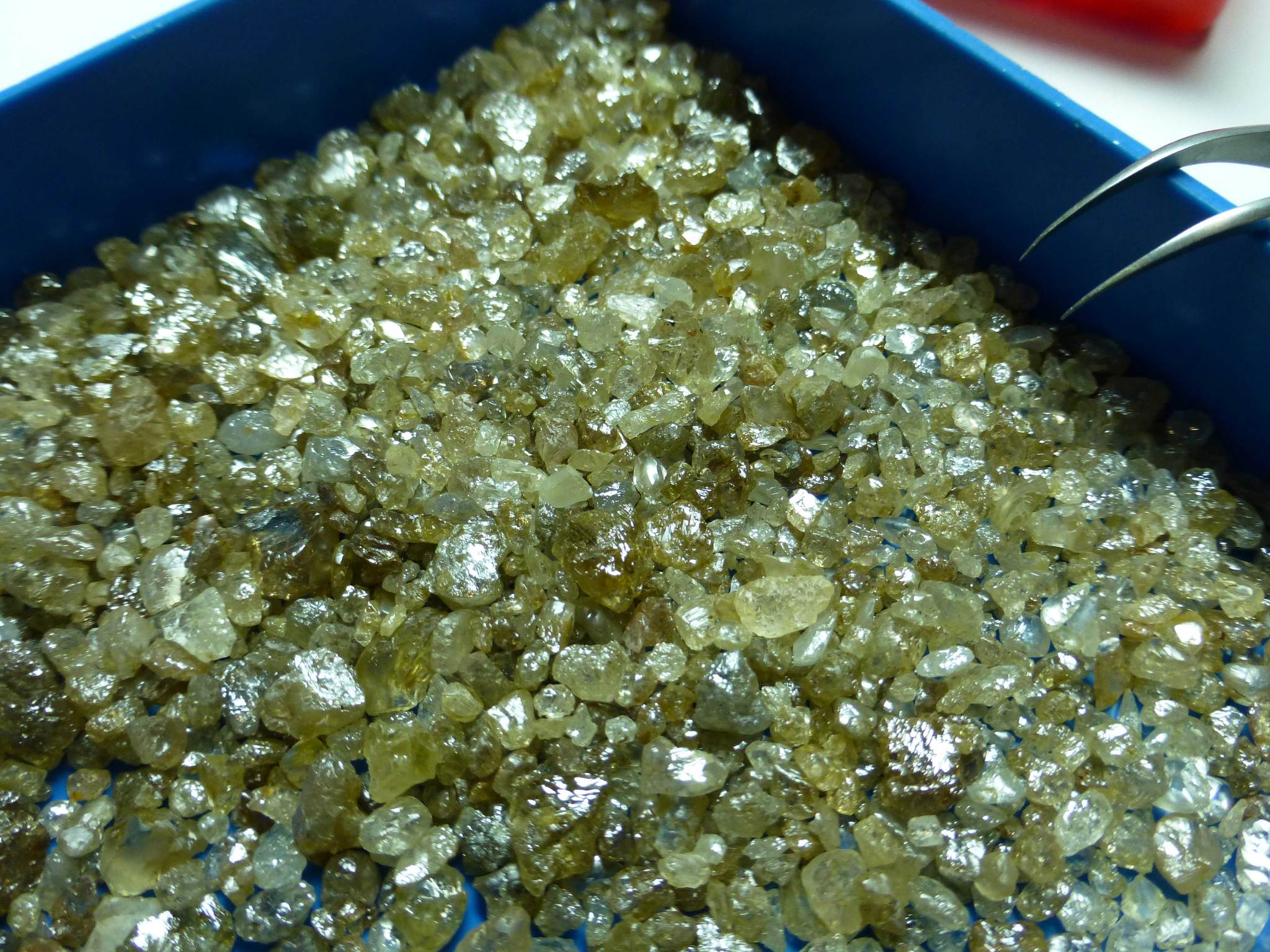Diamonds provide us with a unique window inside the planet. And to its origin. The analysis of precious stones formed in the depths offers one of the few records on the composition of the Earth, hundreds of kilometers below the lithosphere. Scientists suspect that at some point in these chasms, between the crust and the earth's core, there is a huge deposit of rock that remains unchanged since the formation of the planet, about 4.6 billion years ago. But so far it has not been possible to confirm its existence or its possible location.
An international team of researchers brings new clues, thanks to the discovery of 24 'super-deep' diamonds near Juina, in Brazil. The analysis of helium isotopes, trapped in microscopic inclusions, has allowed us to discover traces of this ancient site, which would be hidden more than 410 km below sea level in the Earth's mantle. His work appears Thursday in the journal Science and will be presented to scientists on Friday 23 at the Goldschmidt conference on geochemistry in Barcelona.
Most diamonds are formed between 150 and 230 km below the earth's crust, before being deposited in layers close to the surface. Only rarely do super-deep diamonds come to light - between 230 and 800 km below the surface - driven by violent volcanic eruptions. " More than 99% of the diamonds recovered from the rivers and mines in the Juina area are super deep ," explains Suzette Timmerman, a researcher at the National University of Australia and first author of the work. "That is why we have worked specifically with diamonds from this area."
Little appreciated by jewelers
The impurities of these super- deep diamonds are a valuable sample to study the regions in which they originated and understand what the composition of these remote layers is. Microscopic defects make these diamonds little appreciated by jewelers, but invaluable to geologists. The gases and minerals that are trapped inside remain compressed in their original forms. Sometimes they also contain organic material from creatures that once lived on ancient seabed. They are the testimony of an amazing journey through hundreds of kilometers and millions of years.
"In this case, because of the geochemistry of diamonds, we know that they formed in an area that we call a transition zone, between 410 and 660 km below the Earth's surface," Timmerman explains. By measuring the isotopes of the captured elements, the authors discovered extreme variability, as well as a high ratio of helium 3 and helium 4. This noble gas is one of the best tools to understand the nature of the deepest and oldest regions of the Earth's mantle.
Earth Origin
Shortly after the formation of the planet, the violent geological activity and the impacts with other stars modified its shape, which means that almost nothing of the original structure of the Earth has been preserved. In the eighties, scientists discovered, when analyzing basaltic lavas in different areas of the world, that the ratio between the 3He / 4He isotope at some points was much higher than normal, an isotopic relationship that had only been seen in meteorites that fell on Earth in those first years of the planet. The conclusion is that this lava had to have been transported from some kind of deep deposit on Earth, with a composition that has not changed significantly in the last 4,000 million years.
"This same pattern has been observed in 'Basaltic Oceanic Islands', in the lava that comes to the surface from the depths of the Earth and forms islands such as Hawaii and Iceland," says the researcher. "The problem is that although this basalt comes to the surface, we only see a glimpse of its history. We know little about the mantle from which these movements come."
A primeval sea
In this sense, the diamonds found in Brazil confirm the existence of that deep and primordial source of helium that occasionally infiltrates the transition zone and mixes with material that sinks from the upper layers, creating various isotopic compositions that are recorded in basalts "This means that the invisible deposit so far, which remains from the dawn of the Earth, must be in this area or below it," says Timmerman. Although many other questions remain in the air, for example if it is a single deposit or small areas scattered under the bark.
On the other hand, previous studies with diamonds obtained in the same region of the Brazilian Mato Grosso had suggested that the regions below the upper mantle could also contain a huge water reservoir. A work published in 2014 in Nature by Graham Pearson, a researcher at the University of Alberta, revealed the presence of a rare mineral (the ringwoodite) that suggested the existence of a sea 400-600 km below the Earth's surface. "Pearson's study showed that there is a lot of water in the transition zone," Timmerman explains. "And our work confirms the presence of material from the subductive cortex, which is a way to transport water to those depths. Although there is also the possibility that the water in the transition zone was already there."
According to the criteria of The Trust Project
Know more- Science and Health
- science
ScienceIndia successfully sends its second mission to the Moon, the Chandrayaan-2
Environment The current climate crisis is the first global of the last two millennia
ScienceTwo meters and 400 kilos: discover in France the monumental bone of a 50-ton dinosaur

